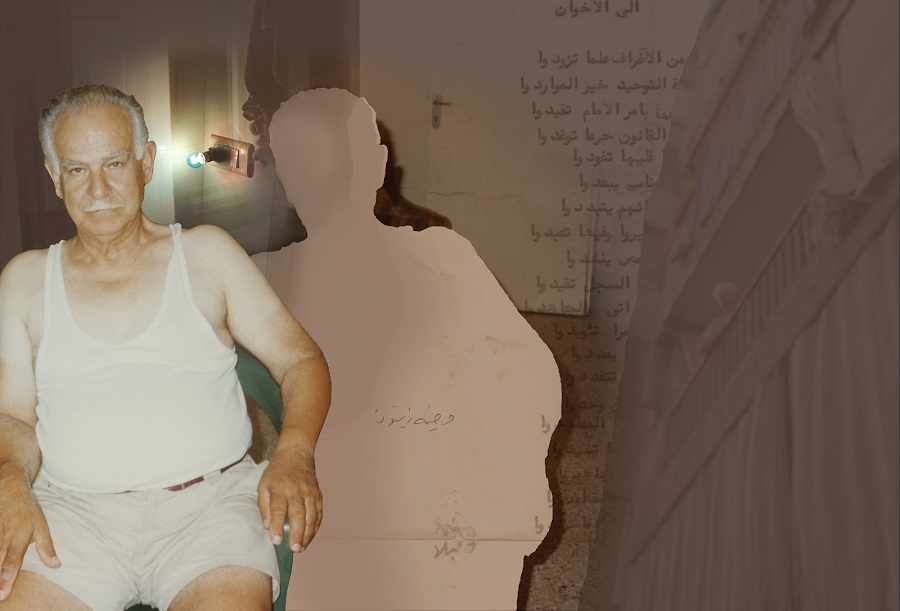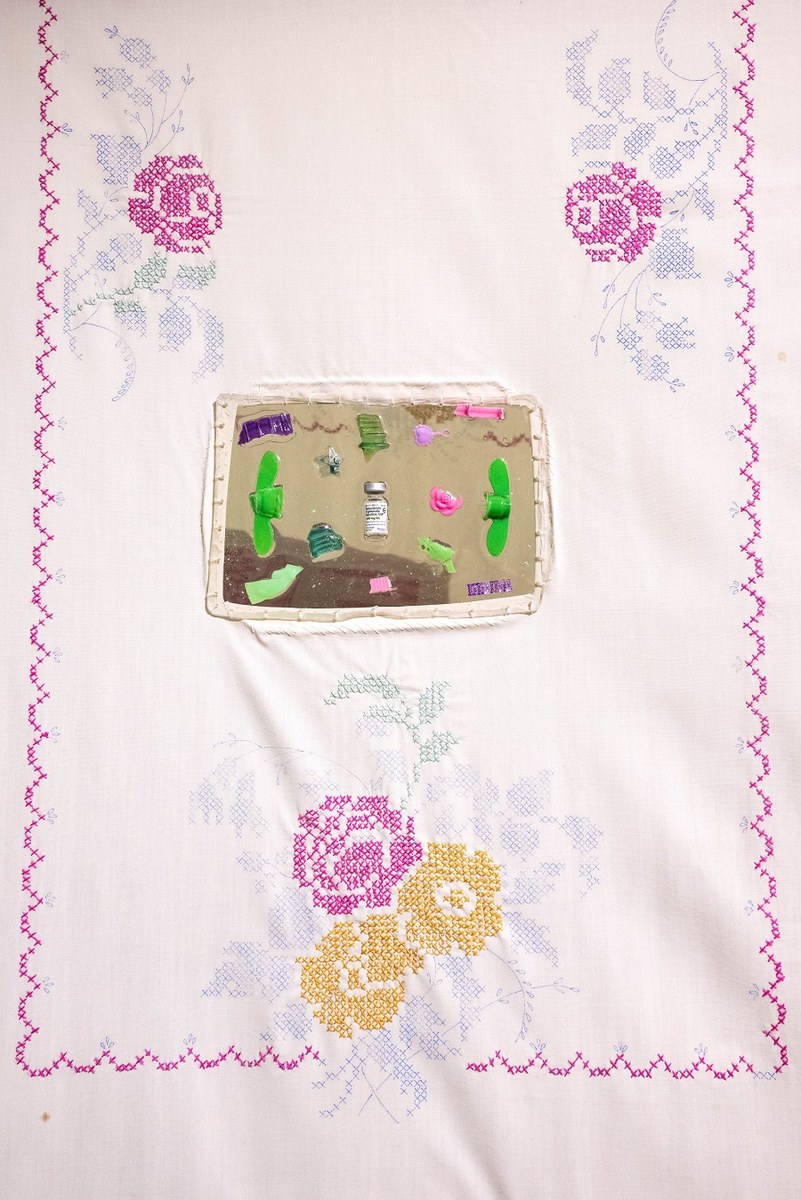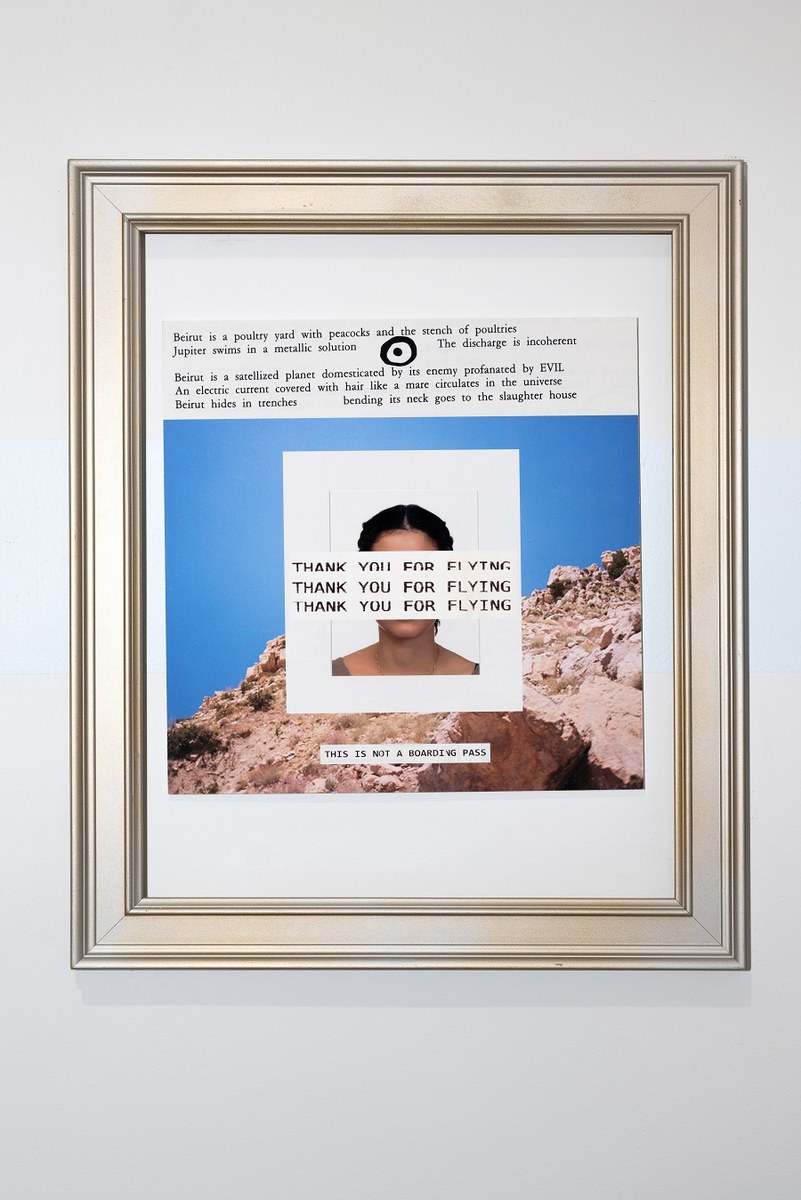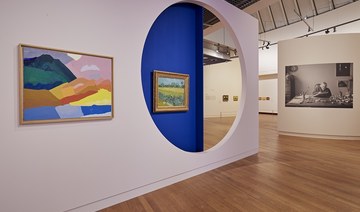DUBAI: In “Night,” the late Lebanese artist and philosopher Etel Adnan’s 2016 collection of prose and poetry, she explores how memory serves as source material for our personal and shared histories. “Is memory produced by us, or is it us? Our identity is very likely whatever our memory decides to retain,” she wrote. “But let’s not presume that memory is a storage room. It’s not a tool for being able to think; it’s thinking before thinking.”
In an exhibition at CUE Art Foundation in New York titled “A Thought is a Memory,” which opened March 23, Cincinnati-based Palestinian-American artist and curator Noel Maghathe uses the artwork of four Arab-American artists — Zeinab Saab, Nailah Taman, Kiki Salem and Zeina Zeitoun — to examine the same theme that Adnan was writing about. Their works, made in a variety of media, including photography, sculpture, collage, animation and painting, simultaneously celebrate and challenge their Arab heritage.

'Wajih Zeitoun' by Zeina Zeitoun. (Supplied)
“The exhibition is intentionally focused on highlighting the experiences and perspectives of Arab-American artists,” Maghathe tells Arab News. “The exhibition explores themes of memory, displacement, and migration, which are issues that have affected the Arab world both at home and abroad. The works on display challenge viewers to consider how memories can be disrupted by political upheaval and forced migration and how these experiences shape one’s identity.”
The show explores the complex relationship that the artists have with their ancestral homelands having grown up in the US while viewing the economic and political disruption taking place in the Arab world. Through their artistic explorations the artists question their relationship to their ancestors.
“The exhibition reflects the viewpoints of the Arab community abroad by showcasing the experiences of Arab-Americans,” Maghathe says. “By highlighting the hybridity of Arab-American identity, the exhibition invites viewers to consider how culture and identity are shaped by migration and displacement.”
In a large, embroidered art installation by Nailah Taman titled “Taeta’s Tabletent,” the artist reflects on a piece embroidered by Taman’s grandmother during the 1980s that she never finished.
“The fabric was found dirtied and stained from the many times it was picked up and put down and forgotten,” Taman explains. “The reworking of this tablecloth; its transformation from a blanket for eating on to a shelter of curiosity threads together ancestral practices. I have pieced together her unfinished meditations with bits of myself.”
The centerpiece of the work is a meticulously arranged array of odds and ends collected by the artist during the COVID-19 pandemic.
“Through the work I peer within the shelter to my ancestry for comfort and guidance, and look outwards, past inherited fears, illnesses and tribulations, towards the beyond,” says Taman. “The work is about ancestral collaboration — the reworking of memories to incorporate generational needs and nourishments.”

'Taeta’s Tabletent' by Nailah Taman. (Photo by Filip Wolak)
Lebanese artist Zeina Zeitoun’s collage works also incorporate found objects. “These objects serve as a proof of existence; home videos, childhood photos, passport photos, airplane tickets and handwriting,” she explains. “Some reconstruct an exact memory with different viewpoints while others create an entirely new memory through the bits and pieces incorporated.”
Zeitoun has added text from “The Arab Apocalypse,” another work by Etel Adnan, to many of the objects. Statements like: “Beirut is a poultry yard with peacocks and the stench of poultries; Jupiter swims in a metallic solution. The discharge is incoherent.” In the center of that piece — “THIS IS NOT A BOARDING PASS” — is what appears to be a passport photo, perhaps of Zeitoun, but the face is largely obscured by text which reads: “Thank you for flying.”

'THIS IS NOT A BOARDING PASS' by Zeina Zeitoun. (Photo by Filip Wolak)
Zeitoun’s work challenges the assumption of memory as based on reality while also positing the possibility of our power to recreate memories.
“In so many cases, because of the weight of displacement and migration, memories become almost imaginary,” says the artist. “How can we know our history and who we are if our displacement and migration force us to forget? This work holds a feeling in time, constructs past moments, and creates new ones for the sake of remembering.”
The intention behind “A Thought is a Memory” goes beyond the artwork on display. Maghathe and the artists intend for it to act as a catalyst to bring the Arab-American diaspora closer together.
“It extends to the connections and relationships formed between the artists, viewers, and myself,” Maghathe tells Arab News. “They long for communal spaces where they can come together, and through this exhibition many of us are able to connect and meet with each other for the first time in person and create a deeper sense of community.”
As Maghathe stresses, the exhibition creates a space for dialogue and exploration around themes relevant to both the Arab-American community and the wider world.
“By centering the perspectives of Arab American artists, the exhibition provides an opportunity for viewers to learn about and engage with the experiences of our community while also reflecting on the shared experiences of displacement and migration across different cultures and communities,” Maghathe adds. “It challenges stereotypes and provides a platform for community building and connection.”












